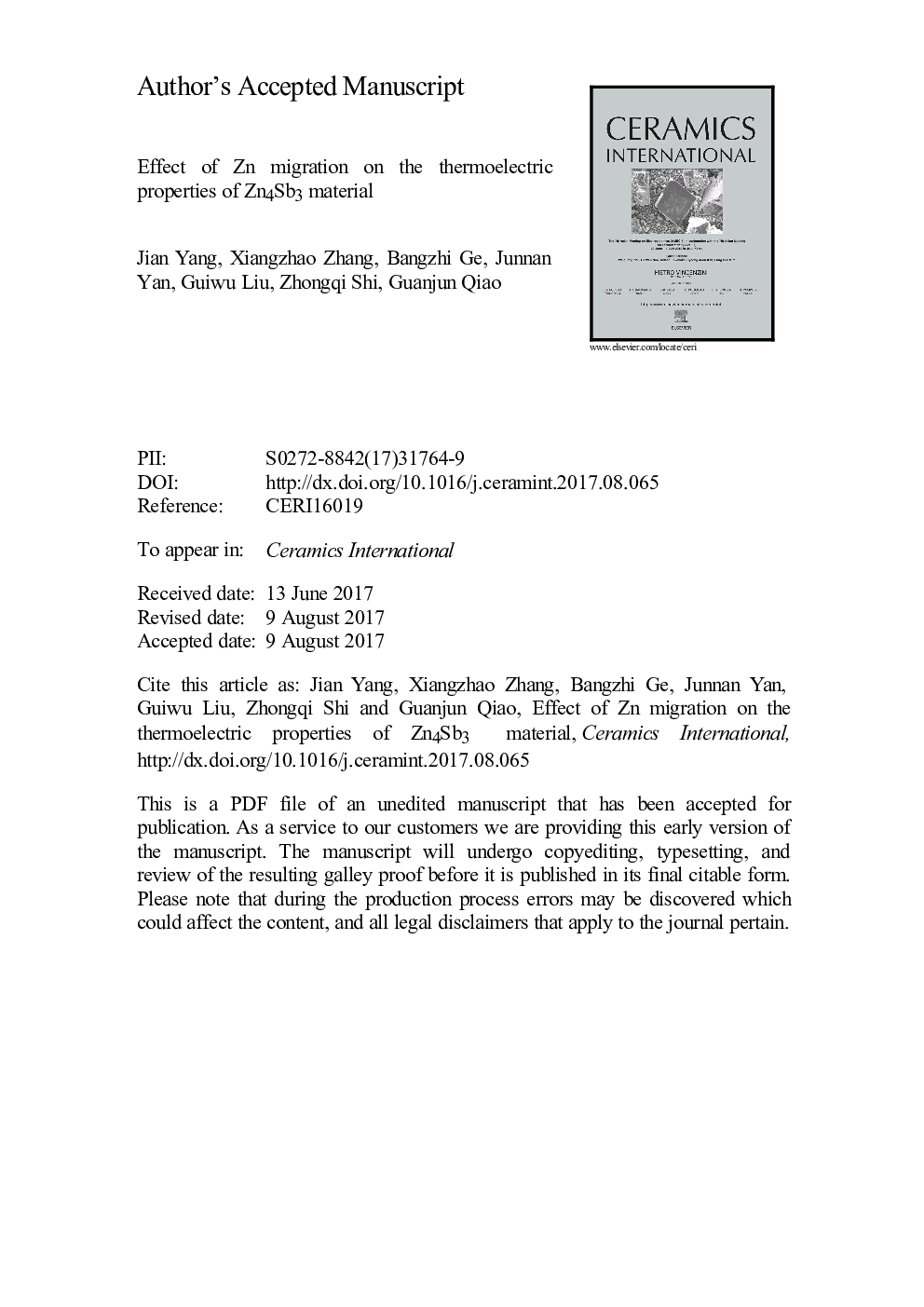| Article ID | Journal | Published Year | Pages | File Type |
|---|---|---|---|---|
| 5437425 | Ceramics International | 2017 | 16 Pages |
Abstract
β-Zn4Sb3 is interesting as thermoelectric material at moderate temperature due to the extreme low thermal conductivity. Recent success in energy band engineering or nano-engineering led to a significant improvement in the thermoelectric properties of β-Zn4Sb3. In this work, we utilize the direct current to drive the migration of Zn by designing of sintering mould. Obvious Zn migration under the direct current applied in the plasma activated sintering (PAS) process is found in Zn4Sb3 compounds, and Zn exhibits significantly heterogeneous gradient composition distribution. At the top of sample, the single-phase Zn4Sb3 decomposes into ZnSb phase because of the loss of Zn, while Zn originated from lattice and interstitial sites in Zn4Sb3 is abundant in the bottom. The temperature-dependent transport measurements are also carried out at 323-673 K. Zn migration has a huge influence on the thermoelectric properties because of the sensitivity of Zn4Sb3. The maximum power factor can reach ~ 1.44 mW mâ1 Kâ2 at 673 K due to the high Seebeck coefficient and low resistivity, which is one of the highest values in the reported results. The resulting peak ZT value of ~ 1.2 at 673 K is obtained. To control the Zn distribution by tuning the current is a feasible approach to improve the thermoelectric properties of Zn4Sb3 material.
Related Topics
Physical Sciences and Engineering
Materials Science
Ceramics and Composites
Authors
Jian Yang, Xiangzhao Zhang, Bangzhi Ge, Junnan Yan, Guiwu Liu, Zhongqi Shi, Guanjun Qiao,
